Milan (Italian: Milano; Milanese: Milan) is financially the most important city in Italy, and home to the Borsa Italiana stock exchange. It is the second most populous city proper in the country, but sits at the centre of Italy's largest urban and metropolitan area. While not considered as beautiful as some Italian cities, having been greatly destroyed by Second World War bomb raids, the city has rebuilt itself into a thriving cosmopolitan business capital. In essence, for a tourist, what makes Milan interesting compared to other places is that the city is truly more about the lifestyle of enjoying worldly pleasures: a paradise for shopping, football, opera, and nightlife. Milan remains the marketplace for Italian fashion – fashion aficionados, supermodels and international paparazzi descend upon the city twice a year for its spring and autumn fairs.
Milan is famous for its wealth of historical and modern sights - the Duomo, one of the biggest and grandest Gothic cathedrals in the world, La Scala, one of the best established opera houses in the world, the Galleria Vittorio Emanuele, a glamorous 19th-century arcaded shopping gallery, the Brera art gallery, with some of the finest artistic works in Europe, the Pirelli tower, a majestic example of 1960s modernist Italian architecture, the San Siro, a huge and famed stadium, or the Castello Sforzesco, a grand medieval castle. So, you have your fair share of old and new monuments. Plus, it contains one of the world's most famous paintings - Leonardo da Vinci's The Last Supper.
-MTrXU.medium.jpg)
If Rome represents the "old" Italy, Milan represents the "new" Italy. These differences between Rome and Milan are evident from several proverbs, such as an Italian saying about the differences of the two cities which roughly translates, "Rome is a voluptuous woman whose gifts are very apparent, while Milan is the shy, demure girl whose treasures are plentiful, but discovered in time." Milan is the most modern of all Italian cities, yet it still keeps most of its past history intact.
At first sight, Milan looks like a bustling and relatively stylish (with its shiny display windows and elegant shops) metropolis, with a good number of grand palaces and fine churches in the centre, but might seem like a slightly prosaic, soulless and business-oriented place. It can be quite rainy, grey and foggy, and some of the buildings, ancient or modern, have quite a severe appearance. Whilst there are a lot of parks, Milan looks as if it has very little greenery, and apart from the very well-kept historic part, many areas are indeed quite scruffy and dirty. However, Milan, unlike most usually historical European cities which throw the sights in your face, requires quite a lot of exploring - take it as it is, and you might enjoy its fashionable glitter and business-like modernity, but might find it not very "captivating". If you spend time, though, strolling through less well known areas such as the pretty Navigli, the chic Brera district, the lively University quarter, or some of the smaller churches and buildings, you'll find a forward thinking, diverse city filled in every corner with history, and with a plethora of hidden gems. Plus, with such an established history in theatre, music, literature, sport, art and fashion, there's really not much you can miss.
Milan, as many have noticed, doesn't fully feel like a part of Italy. Despite the similarities with iconic Italian cities such as Verona or Venice, the city does have a different atmosphere. Milan feels more like a bustling, busy, fashionable business capital - where in several cafes, lots of people only stop to have a quick espresso at the bar counter, and where tourists at times seem even more laid back than the locals. Milan, unlike the traditionally red-terracotta roofed Italian cities, is quite grey, as many buildings are constructed using limestone or dark stones. Older buildings mainly have a sort of Austrian/Germanic neoclassical look with some slight French influences. However, with some cycling around in old fashioned bicycles, restaurant chairs and tables outside at summer filled with locals and tourists alike, and people strolling down the pedestrian avenues, licking an ice cream or carrying some heavy shopping bags, Milan does boast some "Italian flair".
Milan, depending on how you want to tour the city, is a great place to visit pretty much all year round. Keep in mind most places, including tourist destinations and museums, are closed on Mondays.
In autumn, the weather is warm or cool, and in later months can be quite rainy and foggy. At this time of the year, the city's inhabitants are very busy with work, so, the only people you're likely to see wandering around are tourists. All the major venues and shops are opened, since it is the working part of the year.
In winter, the city can become cold (often below or around freezing point), and the weather is usually foggy and rainy if not snowy. However, the city, in the few weeks before Christmas, becomes delightful to visit - the main sights are all illuminated by stunning lights, a huge Christmas tree is set up in front of the Duomo, vendors and markets can be found everywhere, many shop and display windows are decorated and the streets become bustling with locals and tourists alike. However, the only downside is that it can become extremely crowded, noisy and busy.
In spring, the weather is similar to that of autumn. People go back to work, and the atmosphere becomes more quiet, yet serious unlike that of the winter. Parks become nice to visit, as trees blossom. The city is also quite nice to visit at Carnival, where people dress up and celebrate, and during Easter, where there are special services held in churches and some special events.
In summer, Milan can become extremely hot and humid, with the odd powerful rainstorm here and there. Whilst in July, apart from the weather, most shops remain open, in August, as many locals go off to take their summer holidays, many businesses and venues shut down (with the notice Chiuso per ferie, or shut down for vacation). The city may become quite empty with the odd tourist strolling around, and with several of the main sights shut down. Although it is not the best time for shopping and the weather's not at all times very pleasant, it is good if you want to enjoy the city to yourself when it's quiet, and maybe want to stroll around, sipping at the odd open bar or at an ice cream, or walking in a silent park.
As you would expect of a city in Italy, the main language in Milan is Italian. However, the traditional language in Milan is the Milanese dialect of the Lombard language, which is not mutually intelligible with standard Italian. You may still hear Milanese being spoken by some of the elderly in the outskirts of the city, but in general it is moribund. That being said, there is a wealth of literature in the Milanese dialect, so those with a deep interest in Milanese culture may consider learning it.
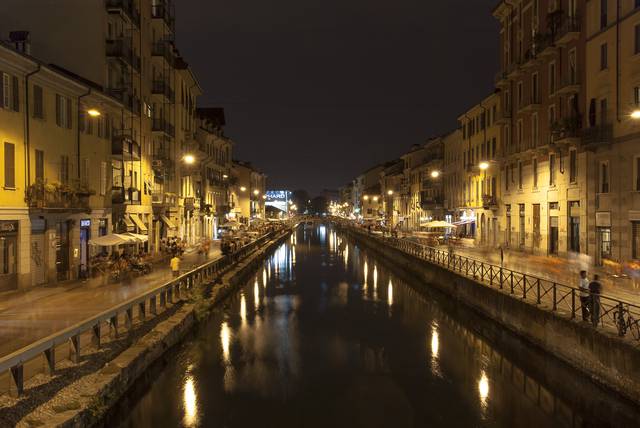
See #Districts for listings.
There are many things to see in Milan - from fine churches, old palaces, excellent museums, world class theatres and opera houses, cultural gems, striking buildings, sleek modern architectural works and lovely streets and squares.
Milan has some of the oldest churches in Italy, older than the ones in Rome because Milan was the capital of the Northern part of the late Roman Empire. The cathedral, Duomo is the symbol and the heart of Milan. Santa Maria delle Grazie in the Western part of the city is the home for Leonardo da Vinci's painting The Last Supper and a UNESCO World Heritage Site. For those passionate about art Milan offers a large variety of art museums, mainly of Italian Renaissance and Baroque. Note, though, that most museums are closed on Mondays.
For long periods Milan has been surrounded by walls, built during the Roman Empire, the Middle Ages and the rule of the Habsburg. Many of the gates are still there and well worth a visit. During the centuries some of them have been completely annihilated and many are built on the same place as a former gate. There are seven gates standing dating from various ages. Clockwise from 12 o'clock they are: Porta Nuova, Porta Venezia (formerly called Porta Orientale and Porta Renza), Porta Romana, Porta Ticinese (two gates; one closer to Duomo and one further out), Porta Sempione and Porta Garibaldi (formerly Porta Comasina).
Despite not having as much greenery as some cities, Milan offers several parks and gardens, scattered all over the city. Maybe the most visited of them is Parco Sempione, also home to the Sforzesco Castle. Many smaller and less-famous parks can be found in the southern part of the city.
Not all points of interest are right in the absolute centre - some of the most wonderful gems can be found near the outskirts or even outside of Milan.
See #Districts for listings.
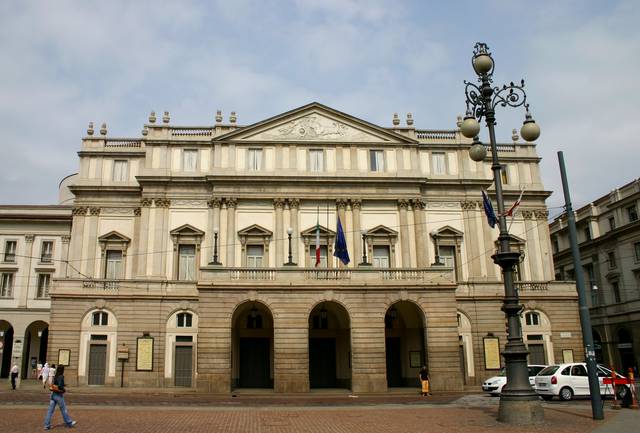
- Exhibitions - Many exhibitions are held during the year, ranging from wines to computers, industrial equipment and chocolate. The fieramilanocity is the old exhibitions ground in central Milan a few km northwest of Duomo (MM1 Amendola Fiera or MM1 Lotto - Fiera 2 Stations), the new fairgrounds of fieramilano are in Rho (northwest of Milan, MM1 Rho Fiera Station, A4 highway Pero exit).
- La Scala, one of the world's most famous opera houses, is in Milan. It also hosts classical music concerts. Other places to enjoy classical music include Teatro dal Verme, Auditorium di Milano and the Giuseppe Verdi conservatory.
- If you like theater and preferably understand Italian, there are a couple of theater houses in Milan. Piccolo Teatro di Milano has three theaters, Teatridithalia - Elfo e Portaromana Associati has two.
- From Torre Branca and the roof of Duomo you have good views of the city - certainly worth taking a couple of photos of.
- Milan has been a hotspot for the Telugu film industry of India. Most of the new films in that language include scenes in Milan. The first 15-20 minutes of the movie Attarintiki Daaredi, the highest-grossing Telegu-language picture of its time, was shot in Milan. So if you ever see the shooting of these films, it's fun to stay and watch if you're allowed to!
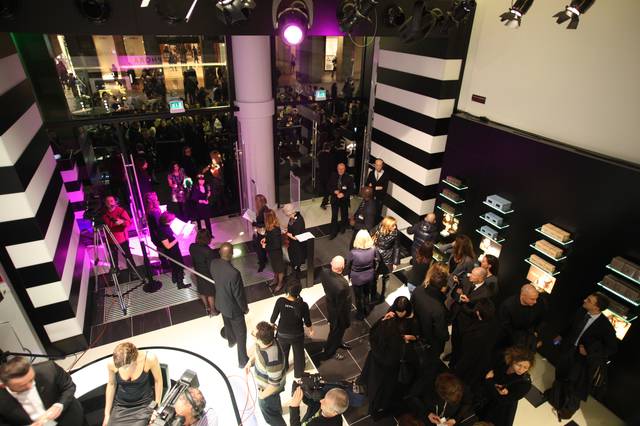
- Watch football ie soccer. The city has two teams playing in Serie A, the top tier of Italian football, AC Milan and Internazionale. They share the San Siro stadium, capacity 80,000, which is 3 km west of city centre with its own metro stop. Matches between the two teams are known as the Derby della Madonnina, which while lacking the intensity of its counterpart in Rome, is also a fairly heated one, with occasional crowd violence between the supporters.
- If you're into Italian fashion, there are few if any better shopping destinations than Milan. All the usual suspects have their brand stores in the historical center. Moreover, Milan Fashion Week, one of the "big four" fashion industry events in the world are held twice yearly (Feb-Mar and Sep-Oct).
- Corteo dei Re Magi. Jan 6, yearly. A parade in Milan featuring the Biblical Three Wise Men who visited Jesus on Epiphany.
- Oh bej, oh bej. Dec 7, yearly. Translates to "oh beautiful, oh beautiful" and is a feast to the memory of Saint Ambrose, the patron saint of Milan. Formerly the festivities were held in the church named after him, nowadays a more commercialized version of it, perhaps more interesting but less colorful, is held in the old exhibition center.
If you're into Italian fashion, there are few if any better shopping destinations than Milan. All the usual suspects have their brand stores in the historical center. Moreover, Milan Fashion Week, one of the "big four" fashion industry events in the world are held twice yearly (Feb-Mar and Sep-Oct).
Corteo dei Re Magi. Jan 6, yearly. A parade in Milan featuring the Biblical Three Wise Men who visited Jesus on Epiphany.
Oh bej, oh bej. Dec 7, yearly. Translates to "oh beautiful, oh beautiful" and is a feast to the memory of Saint Ambrose, the patron saint of Milan. Formerly the festivities were held in the church named after him, nowadays a more commercialized version of it, perhaps more interesting but less colorful, is held in the old exhibition center.
Exhibitions - Many exhibitions are held during the year, ranging from wines to computers, industrial equipment and chocolate. The fieramilanocity is the old exhibitions ground in central Milan a few km northwest of Duomo (MM1 Amendola Fiera or MM1 Lotto - Fiera 2 Stations), the new fairgrounds of fieramilano are in Rho (northwest of Milan, MM1 Rho Fiera Station, A4 highway Pero exit).
La Scala, one of the world's most famous opera houses, is in Milan. It also hosts classical music concerts. Other places to enjoy classical music include Teatro dal Verme, Auditorium di Milano and the Giuseppe Verdi conservatory.
If you like theater and preferably understand Italian, there are a couple of theater houses in Milan. Piccolo Teatro di Milano has three theaters, Teatridithalia - Elfo e Portaromana Associati has two.
From Torre Branca and the roof of Duomo you have good views of the city - certainly worth taking a couple of photos of.
Milan has been a hotspot for the Telugu film industry of India. Most of the new films in that language include scenes in Milan. The first 15-20 minutes of the movie Attarintiki Daaredi, the highest-grossing Telegu-language picture of its time, was shot in Milan. So if you ever see the shooting of these films, it's fun to stay and watch if you're allowed to!
Watch football ie soccer. The city has two teams playing in Serie A, the top tier of Italian football, AC Milan and Internazionale. They share the San Siro stadium, capacity 80,000, which is 3 km west of city centre with its own metro stop. Matches between the two teams are known as the Derby della Madonnina, which while lacking the intensity of its counterpart in Rome, is also a fairly heated one, with occasional crowd violence between the supporters.
See #Districts for listings.Milan, being a worldwide trendsetter, is a fashion shoppers' paradise.
There is pretty much every form of shopping in this city that one can imagine: from the designer's prestigious emporia, retail giants' outlets, small entrepreneur's tiny and funky boutiques, to second-hand average shops.
-toyGX.medium.jpg)
The main shopping area is the so-called Fashion Quadrangle (quadrilatero della moda), a set of blocks roughly between Duomo Square (Piazza Duomo), Cavour Square (Piazza Cavour) and San Babila Square (Piazza San Babila). Here in Montenapoleone Street (with prime brand shops), Della Spiga Street, Vittorio Emanuele Street, Sant' Andrea Street, Porta Venezia avenue and Manzoni Street, it contains the most prestigious boutiques and showrooms in the world. Everything reeks of ostentation and the splendor of a chic, fashionable lifestyle. Shop windows shine, exhibiting the trendiest shoes, coolest glasses, funkiest dresses, most glamorous clothes, and most luxurious crystal chandeliers.
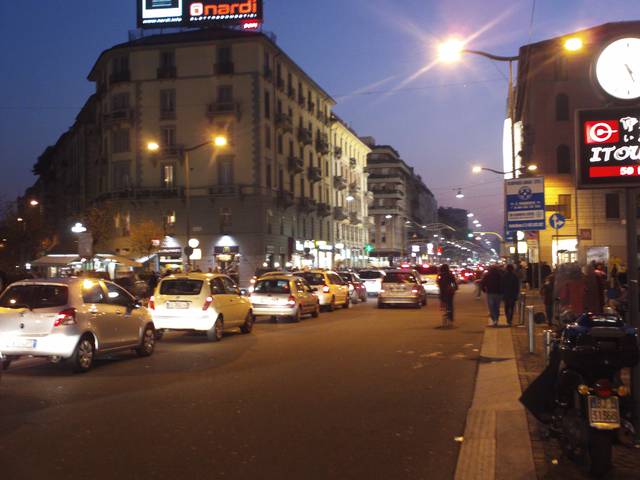 For people wanting to spend a bit less while still buying beautiful pieces, other areas are better. One of these is Corso Vercelli (MM1 Pagano, MM1 Conciliazione subway stations), another one is Corso Buenos Aires (MM1 Porta Venezia, MM1 Lima, MM1/MM2 Loreto subway stations), reputed as being the longest shopping street of Europe.
For people wanting to spend a bit less while still buying beautiful pieces, other areas are better. One of these is Corso Vercelli (MM1 Pagano, MM1 Conciliazione subway stations), another one is Corso Buenos Aires (MM1 Porta Venezia, MM1 Lima, MM1/MM2 Loreto subway stations), reputed as being the longest shopping street of Europe.
The Brera district (Lanza, or Montenapoleone metro stops) is also not to be missed for trendy and young, yet stylish, boutiques. The Brera district is great for other things, such as browsing through traditional rare art stores and galleries, sipping a hot drink at a refined-air cafe, attending a funky disco, or looking for exotic furniture. However, today, there are a lot of young designers who have up-and coming boutiques, which are slightly less expensive than their Montenapoleone counterparts, but are quite fashionable and of high quality. The Brera district is great because it combines chic, old-air shops, with zeitgeist, modernist and youthful ones. Jewelry stores include Papic oro e argento or Alcozer & J. Bijoux, fashion shops include Accessori or Laura Ashley, and furniture stores include Zohar or Lucitalia.
Also in the Centro Storico are the Piazza del Duomo, Via Dante, Piazza San Babila, and the Corso Giacomo Matteotti which are excellent shopping places. In the Galleria, you get brand fashion stores, two bookstores (Rizzoli and Libreria Bocca) and a silverware store called Bernasconi plus a Gucci cafe (and many, many more!). In the Corso Giacomo, you can find Abercrombie & Fitch, in Piazza del Duomo you have Grimoldi, Ruggeri, Donna and La Rinascente department store, in Piazza San Babila you can find Upim, Eddy Monetti, Guess and Valextra, and there are loads of shops in the Via Dante, so there are really heaps of shopping opportunities in this area.
For hipsters, there's the elongated Porta Ticinese area, especially on Saturday, when the flea market Fiera di Senigallia takes place near Porta Genova MM2 subway and train station. This is a great place to wander and browse, and save money if you've somehow survived Milan's high end boutiques. Sort through new and second-hand clothes, old furniture, fake art nouveau lamps, perfumed candles and every kind of essence, books, comics, records, videos and DVDs. In the Corso Ticense, several shops, such as Diesel, RVM Orologi, Dress, Energie, Colors & Beauty, Tintoria La Boutique, Blu Max, Le Jean Marie, Brazilian, Ethic, L'Uomo outlet, Les Tropezziennes, Atelier cucine e ..., Panca's Show Room, or Cinius (and loads more) are present. There are also several banks and post offices, such as the Banca Popolare and Poste Italiane, and a CTS Viaggi travel agency. Thus, with so many shops, you can keep your shopping bags full, and browse even further.
The other market in Milan is the Mercatone del Naviglio Grande. This takes place along the Alzaia Naviglio Grande on the last Sunday of each month. Dedicated to antiques, the market has over 400 exhibitors, so you're certain to find something that catches your eye.
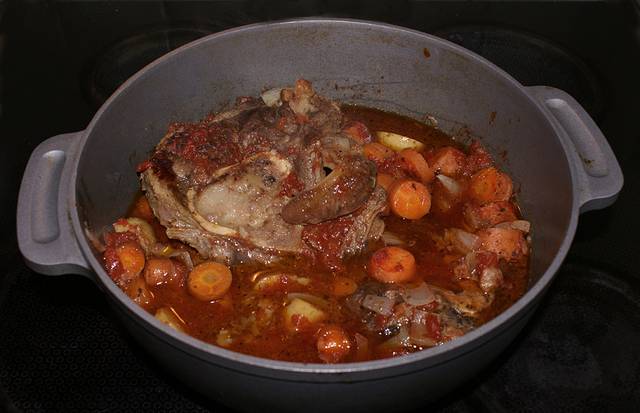
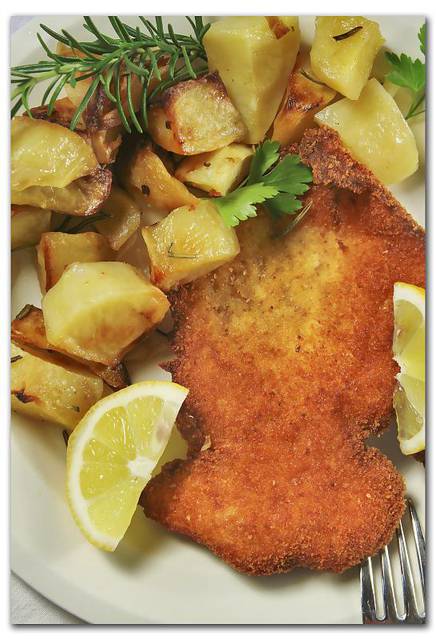
See #Districts for listings.
Although Milan is a city that changes its mind as quickly as fashion trends come and go, it remains one of the strongest bastions of traditional Italian cooking, where homemade elements are still very much praised and appreciated. There are trattorias, enoteche (wine bars) and restaurants (including luxury ones) everywhere that offer traditional Milanese and Italian dishes to eat. This city's traditional cooking is based on filling dishes like osso buco (braised veal shanks) and risotto alla milanese (chicken-broth risotto made with saffron).
Dining times tend to be a shade earlier than in Rome or Florence, with lunch generally served between 12:30 and 14:30 and dinner from 19:30 to 21:30. Dinner, and sometimes lunch, are usually preceded by that great Milanese institution, the aperitivo—a glass of sparkling wine or a Campari soda in a sophisticated hotel bar.
Avoid the restaurants around the Duomo: they tend to be tourist-only spots, with low-quality food at inflated prices. Be aware that most restaurants charge an extra "serving tax" or "table rent", about €2 per consumer. Also avoid restaurants or cafes around the central station, where it has been reported that hidden serving tax can be up to €5 per person with cheap quality food.
There is much confusion regarding tipping in Italy. Italians do not typically leave tips anymore at restaurants. In touristy locations there will often be a line left blank for a tip to be added. Just draw a line through it and leave a couple of euros. Never leave tips at bar counters.
In bars you can enjoy great caffè espresso, cappuccino and a brioche for as little as €2. At bars in the Duomo and San Babila areas, breakfast can be very expensive if you sit down. If in doubt go to the bar and eat there, you'll pay what the Italians do- and they will admire your audacity too.
Milan, as a big city, is filled with several different forms of fast-foods, from the foreign giants and national chains, to independently-owned take-aways and sandwich bars. Most fast-food restaurants are found in the Duomo, Buenos Aires and central station areas, as these are the most crowded and busy ones in the city. In the Piazza Duomo and Galleria, one can find international fast-foods such as McDonald's and Burger King, but Italian chains of the Autogrill group such as Spizzico and Ciao and Autogrill can be found all over the city. There are several Ciao outlets in places such as no. 12 Corso Europa or no. 54 Via Montebianco, and for McDonald's, you get a restaurant in the Piazza del Duomo and Galleria, and also some in the Corso Buenos Aires, plus some others in places such as Corso Vercelli or Piazzale Lotto. Other fast-foods which can be found in Milan include Garbagnati (Cordusio metro station) which is a self-service restaurant and bakery, which has several vegetarian courses, or the Luini (Duomo metro station) which is a restaurant which is famous for making Southern Italian-style pieces of dough with mozzarella and tomatoes inside.
Although Milan cannot claim to be the birthplace of pizza, (that claim belongs to Naples), you can still find good pizzas in Milan. The best areas for pizza are near Via Marghera, and on the Navigli. Also the northeastern outskirts of the city have some good and non-touristy pizza places.
Expect to pay €8-15 for a pizza and a beer. In Milan, pizza is often eaten with a knife and fork, but of course eating with one's hands is possible and welcome. Most people do both.
Watch out for frozen pizza in Milan (it usually states it on the menu). Always check the restaurant has a wood burning oven and that they are using it.
Milan has established a local version of the Aperitivo or Happy Hour. Italians drink very moderately and "happy hour" is not a drinking, but a social event.
Roughly from 19:00 to 21:00, many bars offer drinks and cocktails at a fixed price (€5-8 each), accompanied by free all-you-can-eat buffets with snacks, pastas, and many other small appetizers. But be careful not to confuse "aperitivo" with "free dinner". It's a snack to be enjoyed with a drink. Italians will immediately see you as a buffoon- and it's seen as tacky to fill up on finger food for dinner, although it's common to spot them doing so.
A whole lot of these places can be found in Southern Milan. Another great area for aperitivo, not far from Duomo, is Corso Buenos Aires.
In summer enjoy gelato, excellent Italian ice cream. The quality mark gelato artigianale ("artisanal ice cream") indicates gelaterias that produce their own ice creams, without industrial processing. Bakeries are open every day, you can enjoy great and inexpensive bread-related food, such as pizza and focaccia. You can find a bakery almost everywhere in Milan, even in the Duomo area, and is a good alternative to bars for a fast lunch.
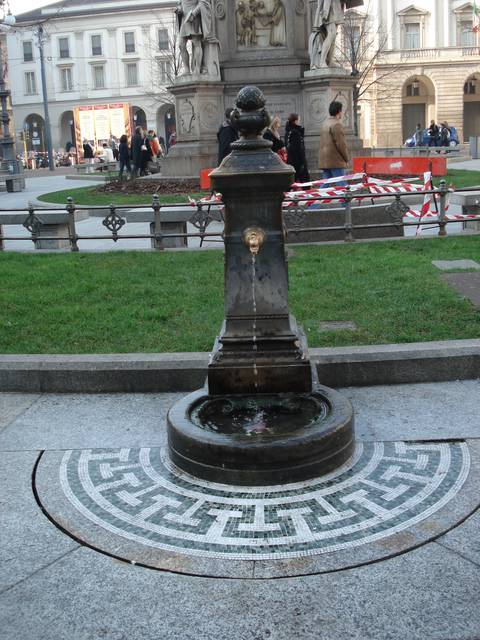
See #Districts for listings.
There are plenty of bars and cafés in Milan of all kinds - from fancy old-fashioned ones, where you can enjoy a formal hot drink, to avant-garde modern places, and youthful spots for a happy hour/late-night drink. Some also offer some food too.
Milan has a great variety of places where you can have fun. A great starting point is Corso Como, near Garibaldi Station, full of bars and glamorous clubs. In the summertime, this street is packed with young and attractive people.
Another place where you can go is the Navigli quarter, near Porta Ticinese Avenue and XXIV Maggio Square, where you can find a lot of small pubs, open air cafes and restaurants by the water canals (navigli). In many pubs and bars you can find a free booklet named Zero2 which is a guide to Milan Nightlife: if you don't know what to do or where to go, do grab one!
Other popular night spots with bars and people are Viale Monte Nero (on Wednesday it's packed with people in the piazza in front of a bar called "Momo"), and Piazzale Susa (and nearby Citta' Studi area). In the Centro Storico, nights are overwhelmingly crowded at the Colonne di San Lorenzo (not far from Navigli quarter), and in the cozy Latin-quarter of Brera. Another good spot is the pedestrian part of Corso Sempione near the Peace Arch (Arco della Pace).
There are bars and clubs open all week long but usually few people go out at night on Mondays or Tuesdays, the vast majority prefer to have fun on Thursdays, Fridays and Saturdays. However, Wednesday night appears to be one of the coolest to go out in stylish VIP-frequented clubs.
Milan has an alternative club scene, with a few crews making electronic music parties outside clubs. Ultracheap, every time in a different location (lofts, warehouses, farms, pools, city parks) those kind of parties attract people aged 20–28. The biggest one is called RESET!and attracts 1500-2000 people once a month
Although Milan has a variety of bars, clubs, restaurants and venues for gay and lesbian travellers, many only operate one night a week. Choosing from one of the "mainstays" listed in the district articles and asking anyone where to go should lead you in the right direction. Also, venues are not concentrated in one area of town, but rather spread throughout the city.
Foreign travelers are often confused by the ARCI card regime that is required for entry into many clubs. It's a relic from the times of police raids that has now conferred tax benefits on these private club owners. No need to fear—just show up and purchase one at any of the clubs. You must bring some ID or you cannot purchase one.
Open air meeting places such as Parco Nord, the gardens behind Cadorna station or Ortomercato are not recommended (criminals and hustlers). The safest way to cruise is to take the late night metro and get into the second-last coach, which is usually occupied by the gays and lesbians.
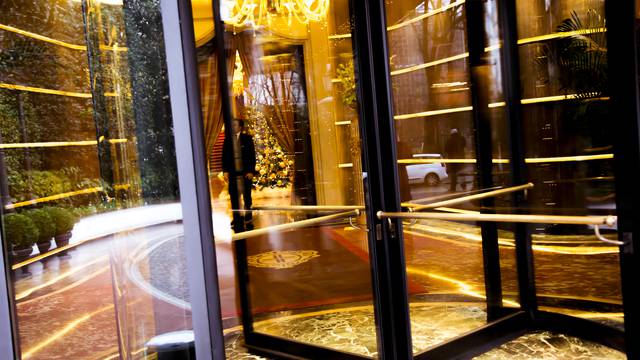
Unless you venture into the dangerous suburbs, Milan is a rather safe city. Certain areas near Loreto, the central railway station, and Porto di Mare (Southern end of the yellow metro line) can be unsafe at night. At the station, do not seek help from any random person offering to help with the booking machines or ATMs or under any other pretext. After they have helped, they will pursue you to get as much money as possible for their "help". Or they can pretend to be helpful, cheating instead. A possible scenario: they guide you through the interface of the ticket machine in a metro station, and advice you to pay using notes instead of coins (allegedly the ticket machine wouldn't accept coins). If you insert a €20 note, the machine would give it back after a few moments. However, before it happens, they will grab your attention saying that the ticket should appear in the bottom of the machine, and simultaneously an old beggar with body odor will appear begging for money. You wouldn't notice it but the beggar will collect the €20 note that the machine would give back to you. The "helper" would then show to you that the maximum amount of change given by the machine is less than €10.
Milan is home to two rival football (soccer) clubs; AC Milan and Internazionale. While not as heated as its counterpart in Rome, the Milan Derby (Derby della Madonnina) is still a rather intense one, and rioting has been known to occur between the supporters of the two rival clubs. Avoid wearing anything that identifies you as a supporter of either team whenever possible, and should you be supporting one of them on matchday, be careful not to wander into a groups of supporters of the other club. Also be sure to avoid wearing Juventus jerseys, as they have a very heated rivalry with Internazionale, and doing so may result in you being targeted for violence by Inter fans, particularly on match days.
Beware of the migrant vendors in the streets: most of the merchandise they sell is imitation/fake luxury goods. Even at a fraction of the cost of the original merchandise, the quality is spotty, and the goods are not well maintained in storage. Remember that it's illegal to bring pirated goods into some countries and therefore such souvenirs might get even more expensive when trying to bring them home.
They may also try giving you "free" friendship bracelets (sometimes calling them 'a gift'). After you take the bracelet, a coloured piece of string, they will hit you up for money and relentlessly pursue you until they get as much as they can. They will be forceful, physically tying the bracelet to your wrist, or laying it on your shoulder as you try and walk away. This is especially true in the tourist areas around the Duomo and Castello Sforzesco. They usually first ask "Where are you from?" Just ignore them. In empty places, watch for strangers directly approaching you. Try to be with other people like in a bus station or a shopping mall.
Beware of people hanging around the square outside Duomo: they will walk up to you and forcefully give you corn on the hands to feed the pigeons on the pretense that they are free. All the pigeons in the surrounding area will then fly to you. The people will then relentlessly pursue you and ask you for money.
Be careful crossing the street: drivers don't usually respect pedestrian crossings unless there is a red light for them to stop.
Thanks to Open Wifi Milano you can surf the web for free in many areas of the city: both in the town center and in the outskirts. To use this connection you have to register and to login. For further information you can visit: the official website.
- Austria Austria, Piazza del Liberty 8/4, 20121 Milano (in Duomo quarter, 350m from or station, +39 02 77 80 78-0. M–F 09:00–12:00.
- India India, Piazza Paolo Ferrari, 8, 20121 Milano (in Scala quarter, 300m from or 350m from, +39 02 80 57 691, +39 02 86 53 37.
- France France, Via Mangili, 1, 20121 Milan (in Porta Nuova quarter, 200m from station; corner of via della Moscova and via Turati, in front of US consulate, +39 02 65 59 141. M Tu Th F 09:00–12:00, W 13:30–16:30.
- Japan Japan, Via Privata Cesare Mangili 2/4, 20121 Milano (in Porta Nuova quarter, 250m from station, +39 02 624 1141. MF 09:1512:15 & 13:3016:30.
- United Kingdom United Kingdom, Via San Paolo, 7, 20121 Milan (in Duomo quarter, 400m from station, +39 02 723 001.
- United States United States.
- Slovenia Slovenia, Via San Senatore, 5, 20122 Milano (in Porta Romana quarter, 400m from station, +39 02 481 7646.
Austria Austria, Piazza del Liberty 8/4, 20121 Milano (in Duomo quarter, 350m from or station, +39 02 77 80 78-0. M–F 09:00–12:00.
India India, Piazza Paolo Ferrari, 8, 20121 Milano (in Scala quarter, 300m from or 350m from, +39 02 80 57 691, +39 02 86 53 37.
France France, Via Mangili, 1, 20121 Milan (in Porta Nuova quarter, 200m from station; corner of via della Moscova and via Turati, in front of US consulate, +39 02 65 59 141. M Tu Th F 09:00–12:00, W 13:30–16:30.
Japan Japan, Via Privata Cesare Mangili 2/4, 20121 Milano (in Porta Nuova quarter, 250m from station, +39 02 624 1141. MF 09:1512:15 & 13:3016:30.
United Kingdom United Kingdom, Via San Paolo, 7, 20121 Milan (in Duomo quarter, 400m from station, +39 02 723 001.
United States United States.
Slovenia Slovenia, Via San Senatore, 5, 20122 Milano (in Porta Romana quarter, 400m from station, +39 02 481 7646.
- Lake Como— A huge, impressive, beautiful lake in the foothills of the Alps. See the villages of Como, Menaggio, Bellagio & Varenna. Como can be reached by regular trains (50 minutes from Cadorna station; 40 minutes from Milano Centrale) and buses.
- Monza— Medium-size town with a beautiful pedestrian-only centre (local museum housing the medieval crown of the Longobard kings) and a marvellous park, Parco di Monza, the largest enclosed park in Europe. Inside the park there is the Autodromo Nazionale where the Formula 1 GP, Superbike and other minor races take place. Accessible by regular trains (15 minutes from Centrale or Porta Garibaldi stations) and buses.
- Bergamo— Elegant walled hilltop Renaissance university town. Bergamo is serviced by regular trains (from Centrale, Porta Garibaldi and Lambrate stations, about 1 hour trip time) and buses.
- Crespi d'Adda — A planned industrial city between Bergamo and Milan. It has been inscribed on the UNESCO World Heritage List.
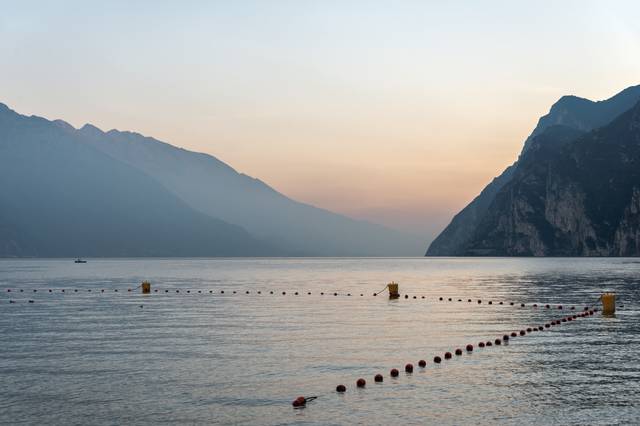
- Lake Garda— Beautiful lake with a lot of beautiful small cities, the best is Sirmione. Two big theme parks are nearby: Gardaland, the best in Italy, and Canevaworld Resort, home of Movieland (a movie theme park) and a water park. Accessible by way of regular trains (65–85 minutes from Centrale station) and buses. Very crowded during summer and weekends.
- Iseo — picture-perfect Italian town, sandwiched between the imposing Rhaetian Alps and crystal-blue waters of the eponymous lake, boasts an extraordinarily well-preserved medieval castle. From Iseo you can also take a ferry boat and reach Monte Isola, the highest European lake island and the largest Italian one.
- Oltrepò Pavese — Wine region of Lombardy, about 70 km to the south of Milan, worth a day or weekend trip to relax, walk or cycle and have the Italian Sunday brunch at one of the excellent local restaurants.
- Serravalle Scrivia, Via della Moda, no. 1 (Serravalle Scrivia exit in the A7 Milan - Genoa autostrada. Reachable by A26/7 autostrada link or Arquata Scrivia railway station (Milan - Genoa), +39 01-4360-9000. All days: 10AM - 8PM. One of the biggest shopping outlets in Europe, containing 180 stores, despite being 1 hours' drive from the city and in the Piedmont region, it is definitely worth a visit if you're a shopping fan. And it has a very pleasant feel because it is more like a mini-town than an actual outlet, with Italian-style piazzas and pretty alleyways, surrounded by rolling hills and a lovely local countryside, and absent of cars. With over 20 million visitors having come ever since its opening in 2000, you can find luxurious designer names, such as Dolce & Gabbana, Etro, Diesel, Roberto Cavalli, Ferragamo, Timberland, Tommy Hilfiger, Prada, Geox, Swatch, Bulgari, Swarovski, and several more (at bargain prices)! Then, if you want to have a meal, you can stop for some fast-foods at Burger King or the Italian Spizzico, have an ice-cream or sip at a drink in a café. Despite the slightly long trip, it makes a truly great day out, and is heaven for any fashionista or passionate shopper! Tour company-operated buses, including one that leaves from near the Castle, will take you there and back (roughly €20 for the round-trip as of early 2008). Reputed to be the first designer outlet in Italy and the biggest in Europe. Over 180 stores stock clothing, footwear and accessories, and it has a parking with 3,000 parking lots, a children's playground, bars and restaurants.
- Excursions without a car: You don't need a car to escape from the business, the traffic, the congestion, the fog in wintertime, and the afa (humid heat in summer), of the city of Milan to a wonderful world of lakes, mountains, castles and good food: just take the train and, sometimes, the boat.
- Biking Trips: Beginning at the 24th May Square (Piazza 24 Maggio) there is an excellent and very long bike road on the right (northern) bank of the canal. Be aware to take the Naviglio Grande (going west on the northern bank of the canal) and follow it as long as you want. After few kilometers you'll reach the nice Chiesetta di San Cristoforo, a popular spot for marriages. If you are well trained, proceed through the countryside. About 10 km to Gaggiano, a very nice and tiny village, and 20 km to Abbiategrasso. If you are still in the mood for riding, follow the canal on the right and reach Robecco sul Naviglio.
- Martesana bike road: near via De Marchi departs the Martesana cycle path. Martesana is an artificial channel and the bike road follows its path up to Cassano D'Adda (32 km one way). This itinerary offers great views on old villas and mills along the quiet canal. In Cassano D'Adda the bike path joins the Adda bike way, which runs up to Lecco (60 km) following the Adda river
[[Lake Como]]— A huge, impressive, beautiful lake in the foothills of the Alps. See the villages of [[Como]], [[Menaggio]], [[Bellagio]] & [[Varenna]]. Como can be reached by regular trains (50 minutes from Cadorna station; 40 minutes from Milano Centrale) and buses.
[[Monza]]— Medium-size town with a beautiful pedestrian-only centre (local museum housing the medieval crown of the Longobard kings) and a marvellous park, Parco di Monza, the largest enclosed park in Europe. Inside the park there is the Autodromo Nazionale where the Formula 1 GP, Superbike and other minor races take place. Accessible by regular trains (15 minutes from Centrale or Porta Garibaldi stations) and buses.
[[Bergamo]]— Elegant walled hilltop Renaissance university town. Bergamo is serviced by regular trains (from Centrale, Porta Garibaldi and Lambrate stations, about 1 hour trip time) and buses.
Crespi d'Adda — A planned industrial city between Bergamo and Milan. It has been inscribed on the [[UNESCO World Heritage List]].
[[Lake Garda]]— Beautiful lake with a lot of beautiful small cities, the best is Sirmione. Two big theme parks are nearby: Gardaland, the best in Italy, and Canevaworld Resort, home of Movieland (a movie theme park) and a water park. Accessible by way of regular trains (65–85 minutes from Centrale station) and buses. Very crowded during summer and weekends.
[[Iseo]] — picture-perfect Italian town, sandwiched between the imposing Rhaetian Alps and crystal-blue waters of the eponymous lake, boasts an extraordinarily well-preserved medieval castle. From Iseo you can also take a ferry boat and reach [[Monte Isola]], the highest European lake island and the largest Italian one.
[[Oltrepò Pavese]] — Wine region of Lombardy, about 70 km to the south of Milan, worth a day or weekend trip to relax, walk or cycle and have the Italian Sunday brunch at one of the excellent local restaurants.
Serravalle Scrivia, Via della Moda, no. 1 (Serravalle Scrivia exit in the A7 Milan - Genoa autostrada. Reachable by A26/7 autostrada link or Arquata Scrivia railway station (Milan - Genoa), +39 01-4360-9000. All days: 10AM - 8PM. One of the biggest shopping outlets in Europe, containing 180 stores, despite being 1 hours' drive from the city and in the Piedmont region, it is definitely worth a visit if you're a shopping fan. And it has a very pleasant feel because it is more like a mini-town than an actual outlet, with Italian-style piazzas and pretty alleyways, surrounded by rolling hills and a lovely local countryside, and absent of cars. With over 20 million visitors having come ever since its opening in 2000, you can find luxurious designer names, such as Dolce & Gabbana, Etro, Diesel, Roberto Cavalli, Ferragamo, Timberland, Tommy Hilfiger, Prada, Geox, Swatch, Bulgari, Swarovski, and several more (at bargain prices)! Then, if you want to have a meal, you can stop for some fast-foods at Burger King or the Italian Spizzico, have an ice-cream or sip at a drink in a café. Despite the slightly long trip, it makes a truly great day out, and is heaven for any fashionista or passionate shopper! Tour company-operated buses, including one that leaves from near the Castle, will take you there and back (roughly €20 for the round-trip as of early 2008). Reputed to be the first designer outlet in Italy and the biggest in Europe. Over 180 stores stock clothing, footwear and accessories, and it has a parking with 3,000 parking lots, a children's playground, bars and restaurants.
